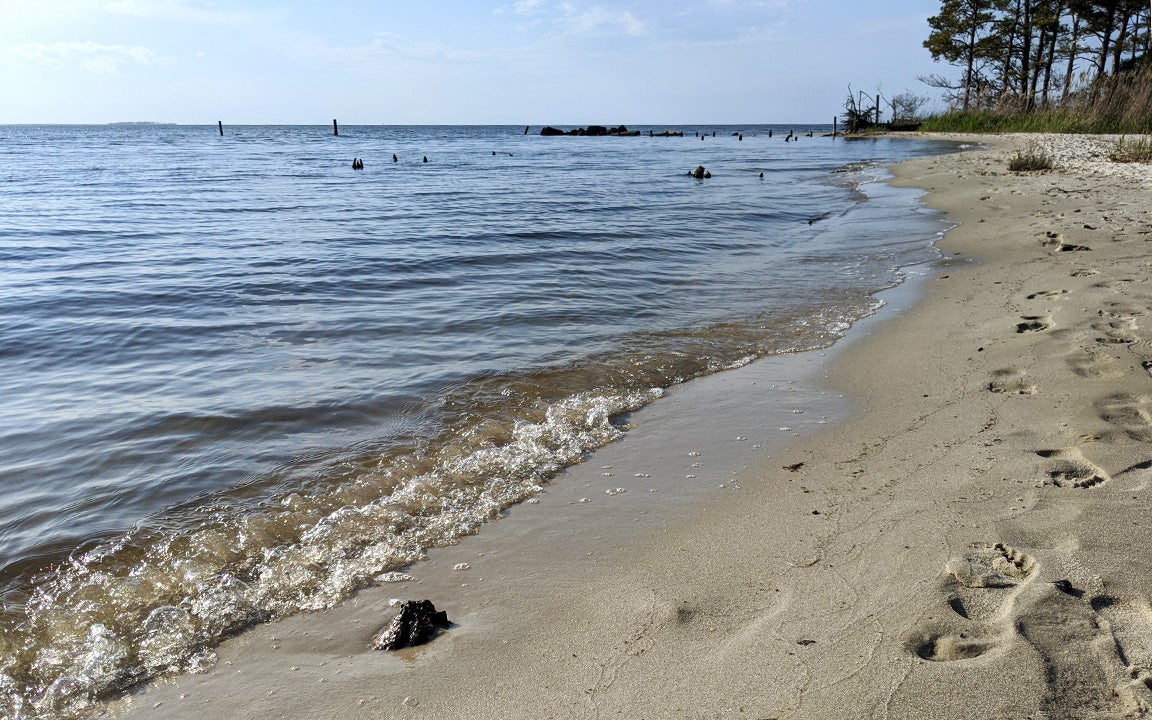Staying safer in the water amid Vibrio concerns
Published 1:41 pm Tuesday, September 19, 2023

- Croatan Sound, north end of Roanoke Island. Theresa Schneider photo
|
Getting your Trinity Audio player ready...
|
The Dare County Health Department has investigated three recreational water-related illness (RWI) cases this summer, with one confirmed fatality from Vibrio vulnificus.
To help educate the public on how to reduce the risk of RWIs, Dare County has produced a video and included links to check for health advisories at different swimming locations throughout the county.
Though social media posts have claimed a second Vibrio death, Health & Human Services director Sheila Davies confirmed only one fatality. The deceased contracted Vibrio in Buzzard Bay in Kill Devil Hills. The other two investigated cases were from ocean water in Nags Head and oyster consumption.
Vibrio bacteria is always present in the water, but it multiplies in warmer temperatures. It can be contracted by swallowing contaminated water, by eating undercooked shellfish, or, most commonly, through an open wound.
But what is considered “an open wound?”
Even a small open sore from scratching a mosquito bite or from acne can allow Vibrio access to the body. Larger cuts or those acquired while in the water pose a greater threat. This could come from a puncture wound from a fish fin or shellfish, or fishing hooks or equipment.
The CDC issued a health advisory September 1 about Vibrio infections throughout the United States. There are different species of Vibrio, but Vibrio vulnificus is the rarest and most deadly.
“About 150–200 V. vulnificus infections are reported to CDC each year and about one in five people with this infection die—sometimes within 1–2 days of becoming ill,” said the health advisory.
The most vulnerable to infection are people with underlying health issues such as liver disease or diabetes or compromised immune systems.
Symptoms of wound infection include pain, redness and swelling, and the infected area may quickly spread or blister. Internal ingestion symptoms can include diarrhea, vomiting, abdominal pain, fever and chills, and usually show up within 24 hours of exposure.
“Be really vigilant in looking for signs of infection,” said Davies. If you or your child has been in the water over the last 24 hours and is showing signs of infection, she said it’s best to “err on the side of caution” and see a doctor.
If Vibrio is suspected, antibiotics will be prescribed. The only way to confirm Vibrio is through a culture, which takes days to grow, and is therefore unhelpful since treatment must be started immediately.
When contracted, Vibrio works by attacking the most vulnerable organ. When contracted via a wound, it can spread quickly and cause necrosis of the skin.
To stay safe, the CDC recommends staying out of the salt or brackish water if you have an open wound or cut, and if you get a cut while in the water, get out of the water and wash it with soap and drinkable water. People with recent piercings or tattoos should also stay out of the water, and cover any wound or potentially vulnerable area with a waterproof bandage if going near the water.
Always wash hands after handling raw shellfish, and cook shellfish—especially oysters—before eating.
Restaurants can “do everything right” according to Davies, including getting the oysters from a reputable source and keeping them at the appropriate temperature before serving them, but if not cooked (recommended is 145 degrees F), they can still cause illness if Vibrio is present.
To decrease risks of other recreational water illnesses found in coastal waters such as E. coli, Shigellosis and Cryptosporidiosis, which can be found in ocean, sound and marsh waters, as well as in hot tubs and swimming pools, Davies recommends showering before and after time in the water, and following posted advisories.
From April to October, The North Carolina Department of Environmental Quality (NCDEQ) tests about 40 sites in Dare County weekly for the bacteria Enterococci. Though it does not cause illness, this bacterial organism is an indicator of other elevated bacteria in the water.
If the levels of Enterococci exceed established limits, NCDEQ posts advisories online and also physically posts signs at swimming areas, notifying the public that the water is deemed unsafe.
Coastal storms, hurricanes or heavy rainfalls can also push contaminants into the water, and the public is encouraged to wait 24-48 hours before swimming to allow the water to clear.
The county recommends not swimming near ocean outfalls at any time, as they “discharge wastewater, stormwater, and other potentially contaminated waters to the sea,” according to the county health department website.
To view an interactive map of water quality advisories and drain pipe locations, visit deq.nc.gov/about/divisions/marine-fisheries/shellfish-sanitation-and-recreational-water-quality/recreational-water-quality. Visitors to the site can also sign up for water quality advisory notices.
Though Vibrio and RWI are a serious risk, fatalities are also rare.
While bacteria levels are elevated this year compared to other years, Davies said that statistically, we are really not seeing an increase in the contraction of disease.
That said, she admits that the reporting system is unhelpful for a tourist community. The state requires that Dare County report only confirmed cases from Dare County residents. The county investigates other reports, but if a person from another county or state has a confirmed reportable disease like Vibrio, it is “counted” in their home county.
So while our data will only show one confirmed Vibrio case, the county actually investigated two other non-resident cases.
For more information about RWIs, visit the county’s health department webpage at darenc.gov/rwi.
SUBSCRIBE TO THE COASTLAND TIMES TODAY!






